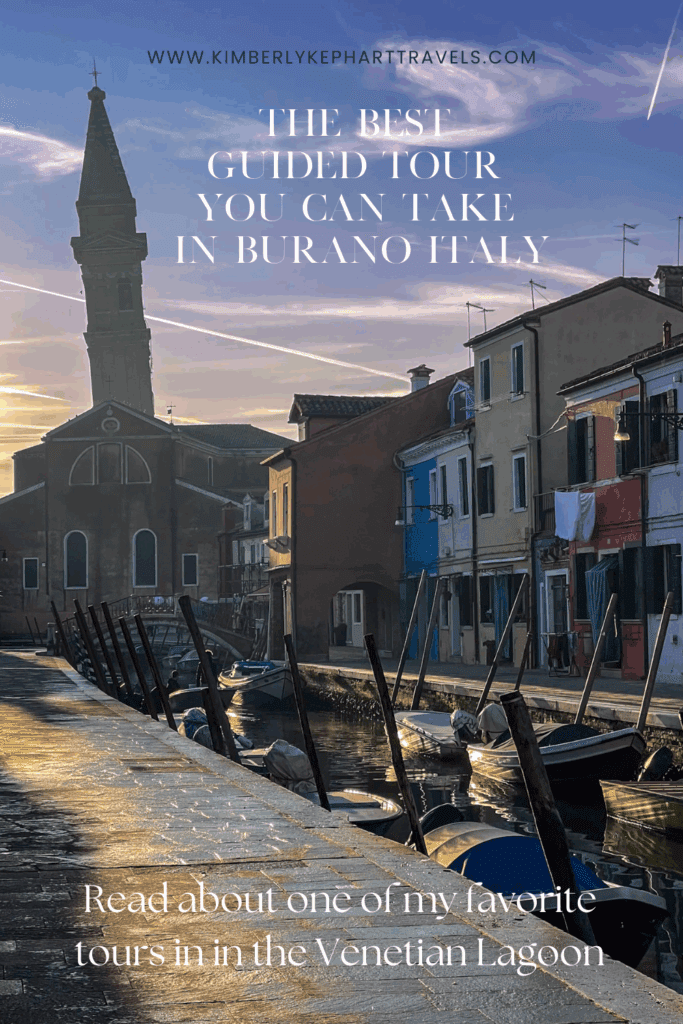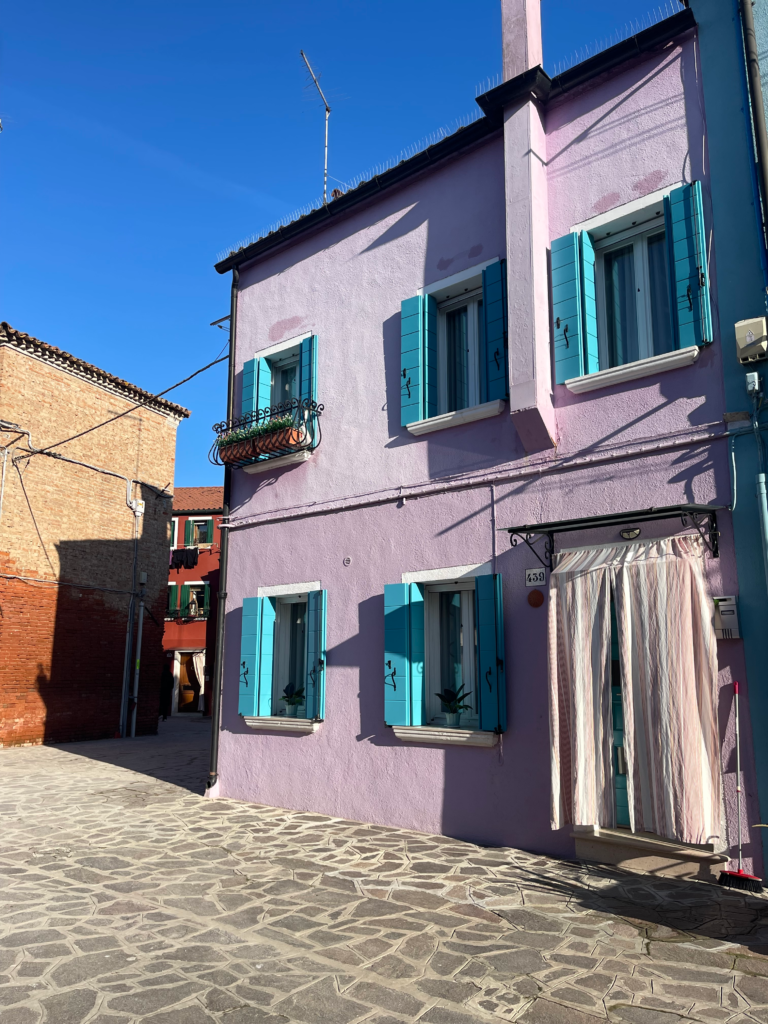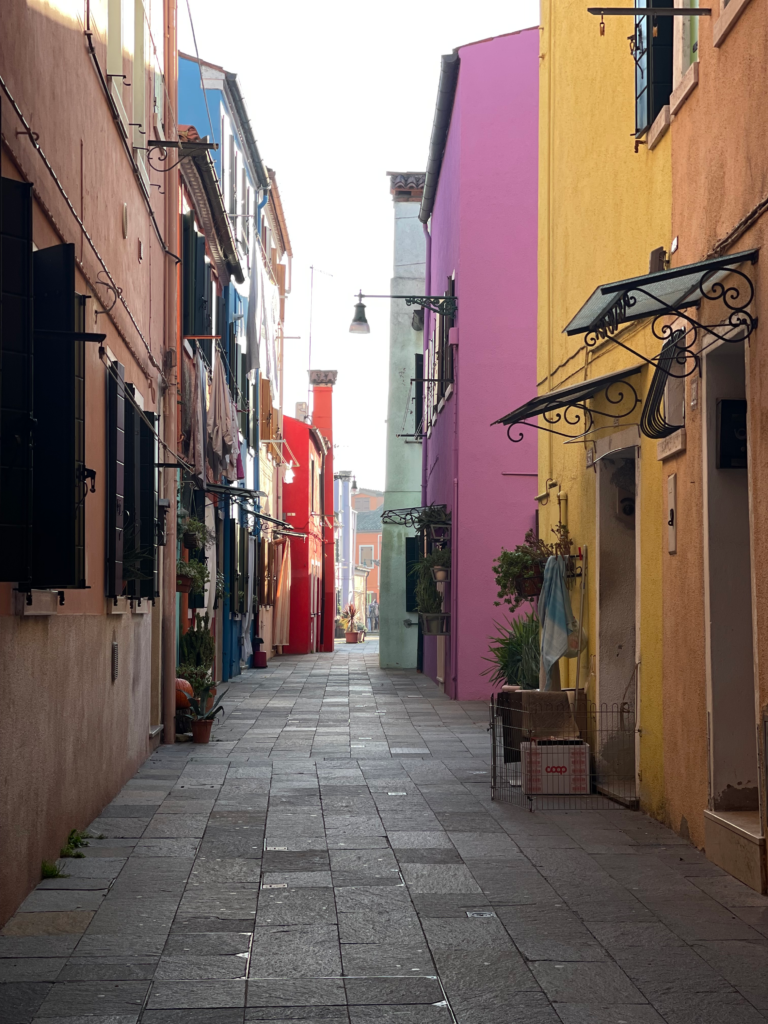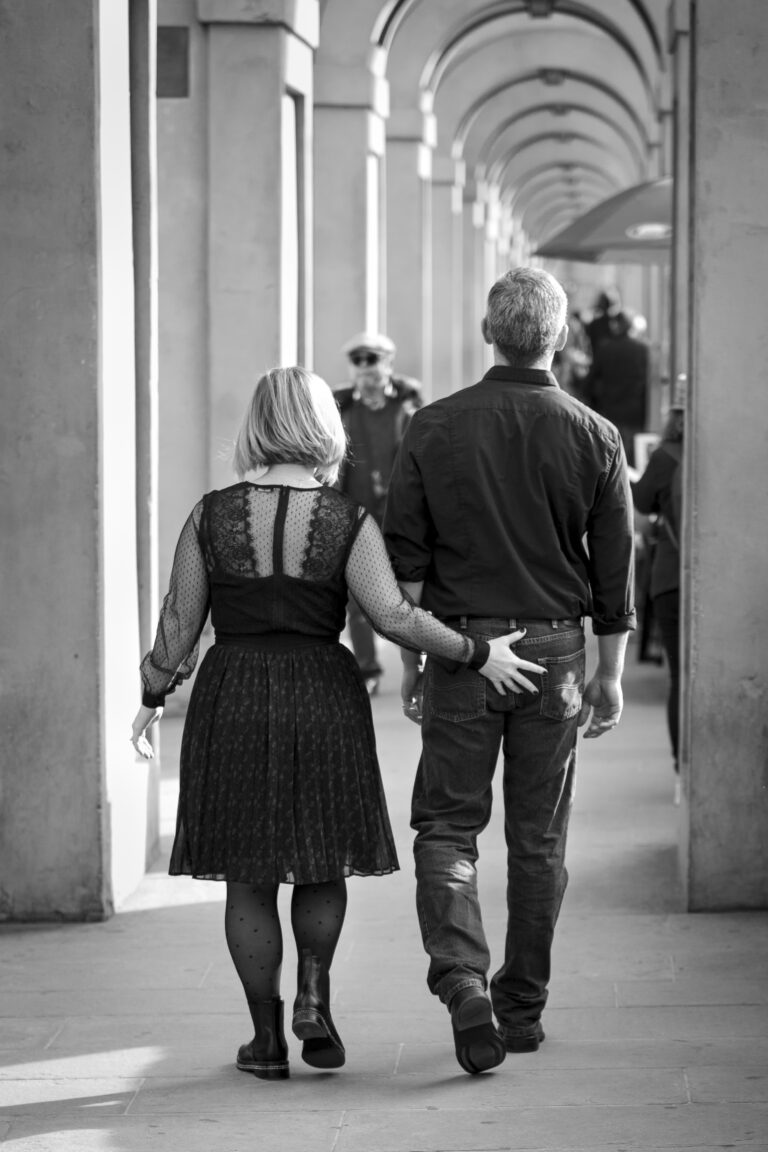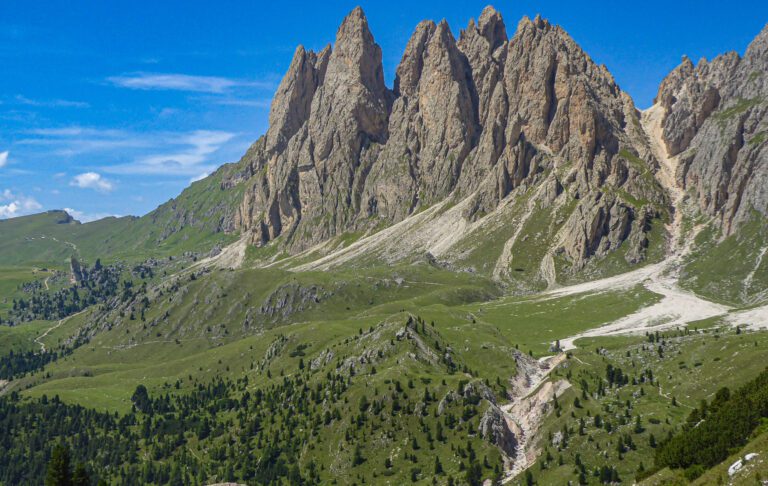Burano Day Trip from Venice: A Guide to the Island, Its Colors, and the Tour You Should Book
Burano is one of the easiest and most rewarding day trips from Venice — colorful, calm, and far simpler to visit than most travelers realize. Whether you’re planning a quick island escape, searching for the perfect photography spot, or looking for a meaningful cultural experience beyond Venice’s crowds, Burano delivers all of it in a single afternoon.
But here’s the part most people miss: Burano becomes unforgettable when you explore it with a local who understands its history, families, and traditions. On my most recent visit, that guide was Silvia, a Burano native whose stories completely changed how I saw the island.
If you’re ready to plan your trip — quickly, clearly, and with zero confusion — start with the quick guide below, then dive into the details.
Or skip ahead to book the exact Burano tour I took with Silvia.
This Post Pairs Well With:
- Italy Guide: More Content from Italy
- Venice Carnevale in 3 Days: A Practical, Magical First-Timer’s Guide
- Train Travel in Italy: How to get around Italy by Train
- Daytrip from Venice: E-biking the Prosecco Hills
- Driving in Italy: 5+Important Tips You Should Know
- How to See St. Mark’s Basilica & Doge’s Palace in One Day (Without Losing Your Mind)
- The 4 Best Food Tours of Venice: The Perfect First-Timers Guide
- The Truth About Gondola Rides in Venice (And How to Make Yours Worth Every Euro)

QUICK GUIDE: Burano at a Glance
Travel Time from Venice: 45 minutes by Vaporetto Line 12
Best Time to Visit: Winter–spring or midweek for fewer crowds
Top Highlights: Colorful houses, lace-making, Bepi’s House, leaning bell tower
Must-Do Experience: Secret Corners of Burano tour with local guide Silvia
Perfect For: Solo travelers, photographers, culture lovers, Venice first-timers
Cost: Vaporetto €9.50 one-way; guided tours vary
Trip Length: 3–4 hours minimum
WHERE IS BURANO? (+ MAP)
Burano sits in the northern part of the Venetian Lagoon, about 7 km from central Venice. It’s one of three major lagoon islands (along with Murano and Torcello) and is known for its bright houses, fishing heritage, and centuries-old lace tradition.
From Venice, the easiest way to reach Burano is by Vaporetto from Fondamente Nove, a straightforward 20-minute walk from St. Mark’s Square. Boats are frequent, the journey is scenic, and the route is simple even for first-time visitors.
How to Use This Map:
Click the icon in the top left corner to see all the places I’ve pinned around the city— from cafés and museums to scenic viewpoints. You can turn layers on or off and click any pin to learn more about each spot. Want to keep it handy for your trip? Click the star next to the map’s title to save it to your Google account.
Then, open the Google Maps app, go to “Saved” → “Maps,” and you’ll see this map ready to guide you while you explore.
Did you know you can get a pass that makes transportation in Venice seamless? I wish I had known about the Venice Bus and Vaporetto pass sooner!
Why Burano Makes the Perfect Day Trip from Venice
If you’re staying in Venice, you’ll eventually crave somewhere quieter, softer, and slower. Burano is that place.
Travelers love Burano for:
- Its vividly painted homes
- safe, walkable streets (a solo traveler’s dream) people literally leave their keys in the doors here.
- its deep-rooted craftsmanship and traditions
- effortless beauty—you can’t take a bad photo here
But what sets Burano apart from other lagoon islands is how much local life you’ll still find here. Children biking home from school, lacemakers stitching on porches, neighbors chatting across canals…it’s Venice without the noise.
Book the tour I took — Secret Corners of Burano — to experience the island through the eyes of someone who grew up here.
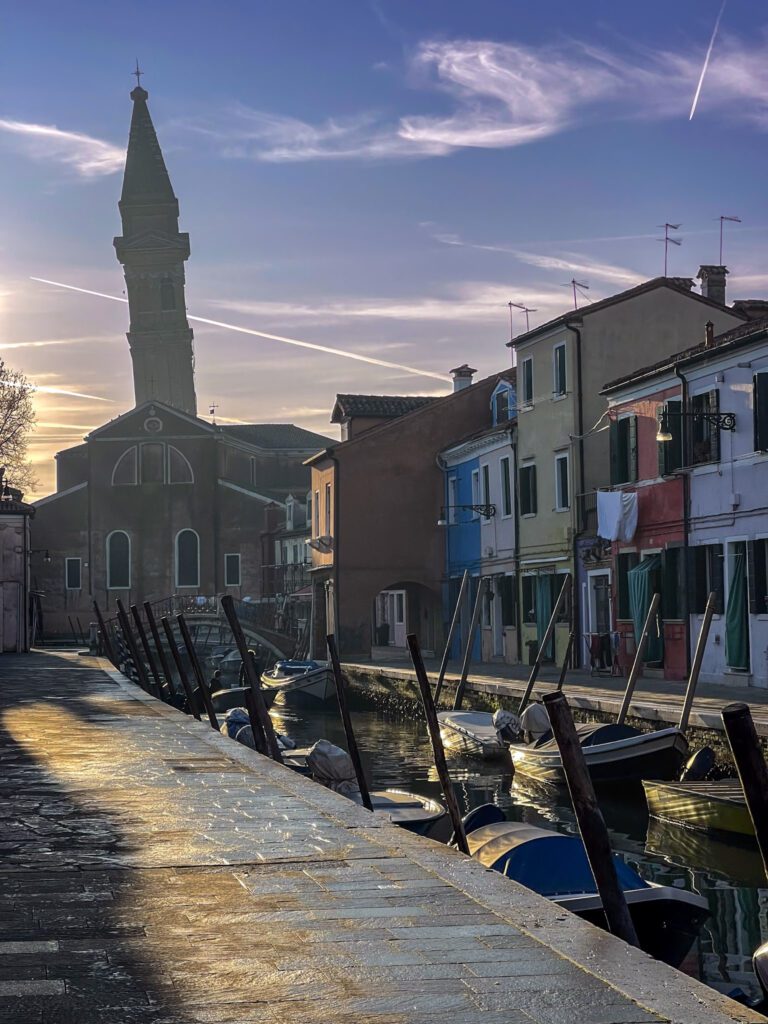
Meeting Silvia: The Guide Who Brings Burano to Life
Our tour began at the Vaporetto stop next to the “Waiting for Peace” statue—a sculpture most visitors breeze past. For Silvia, it’s personal. Her relative posed for the artist, Remigio Barbaro, a Burano native known for capturing strength and resilience in his work.
Within minutes, I realized this wasn’t going to be a typical sightseeing walk. Silvia shared stories from Burano’s early days, explaining how 6th-century refugees fled inland invasions and built new lives on the islands of the lagoon. Burano became a fishermen’s community, and the brightly painted homes helped them navigate home through thick fog.
This blend of history and memory is what makes Silvia’s tour different. You don’t just learn what happened—you learn who lived it.
Want to understand Burano’s stories, not just see the colors? Book Silvia’s tour here.
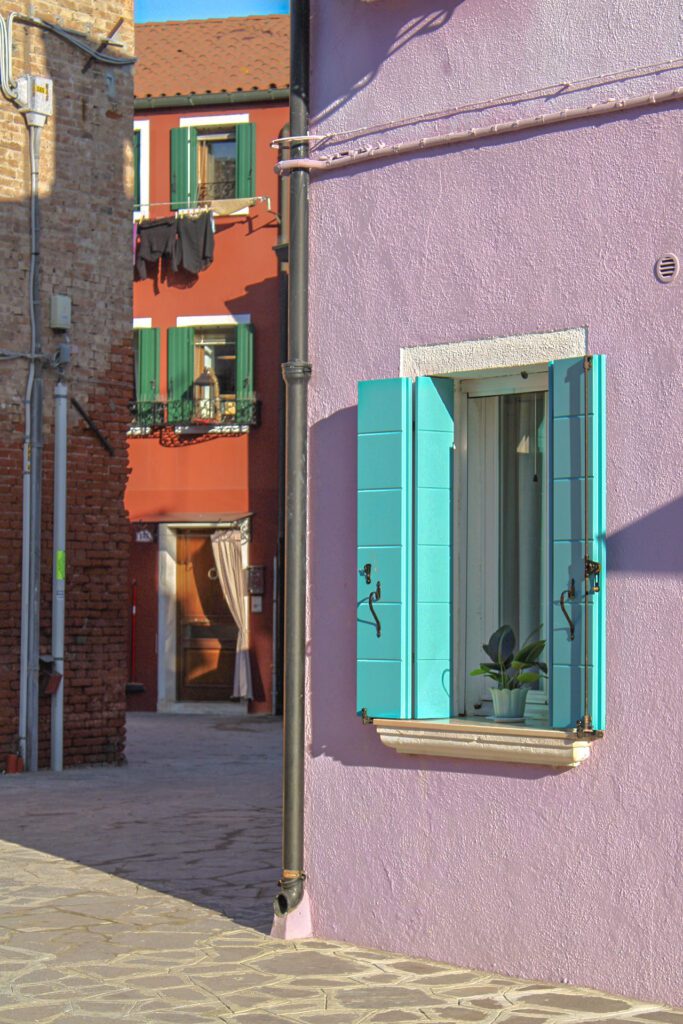
Burano in the 16th Century: Lace, Trade, and Fame
Burano’s lace-making tradition began with the island’s women, whose meticulous work gained fame across Europe by the 1500s. Their lace reached royal courts, influenced fashion, and even caught Leonardo da Vinci’s attention.
If you visit on a clear day, you may see older women sitting outside, stitching lace with the same techniques passed down through generations.
This tradition still shapes the island’s identity—and Silvia’s tour gives context that most visitors never hear.
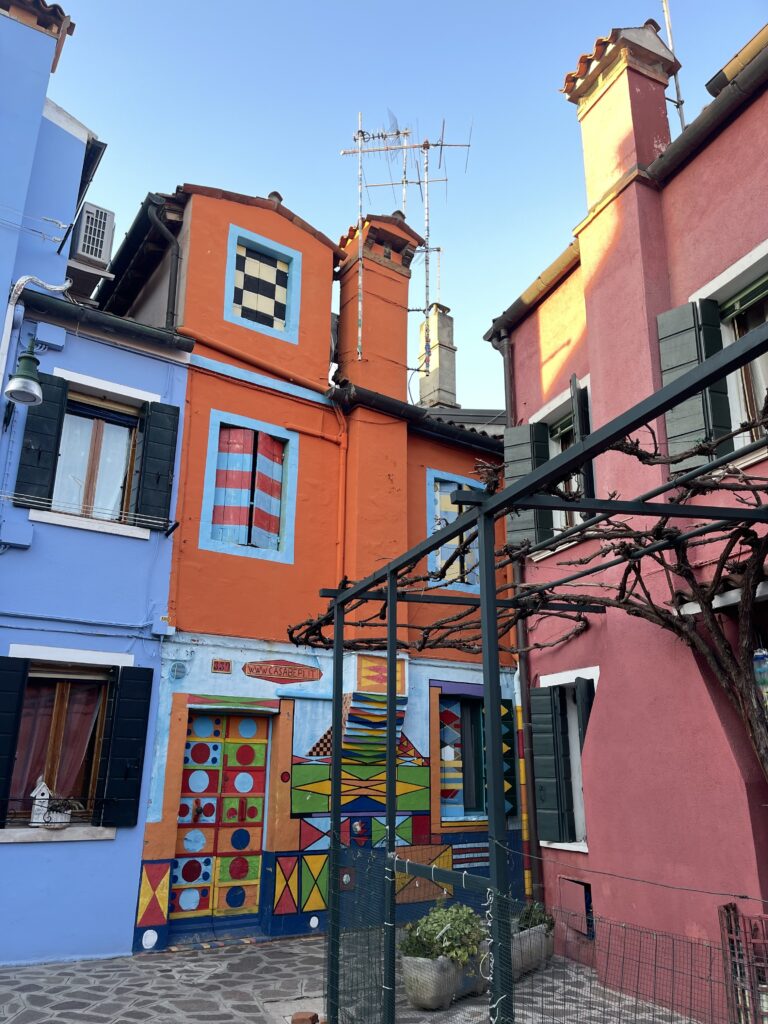
Where You’ll Stop on the Secret Corners of Burano Tour
Silvia’s route avoids the congested main streets and instead focuses on quiet squares, hidden alleys, and places tied to family histories. These were my favorite stops:
The House of Bepi
A patchwork of geometric shapes and bright colors, once home to a beloved local character who painted it to brighten the neighborhood. It’s now one of Burano’s most iconic sights.
Church of San Martino Vescovo
Home to artwork by masters like Tiepolo and a leaning bell tower that has become one of Burano’s most photographed landmarks.
The Lace Museum & School of Lacemaking
A chance to see historic lace pieces and understand the painstaking process behind Burano’s most famous craft.
Every stop comes with stories Silvia grew up hearing—details no standard tour can match.
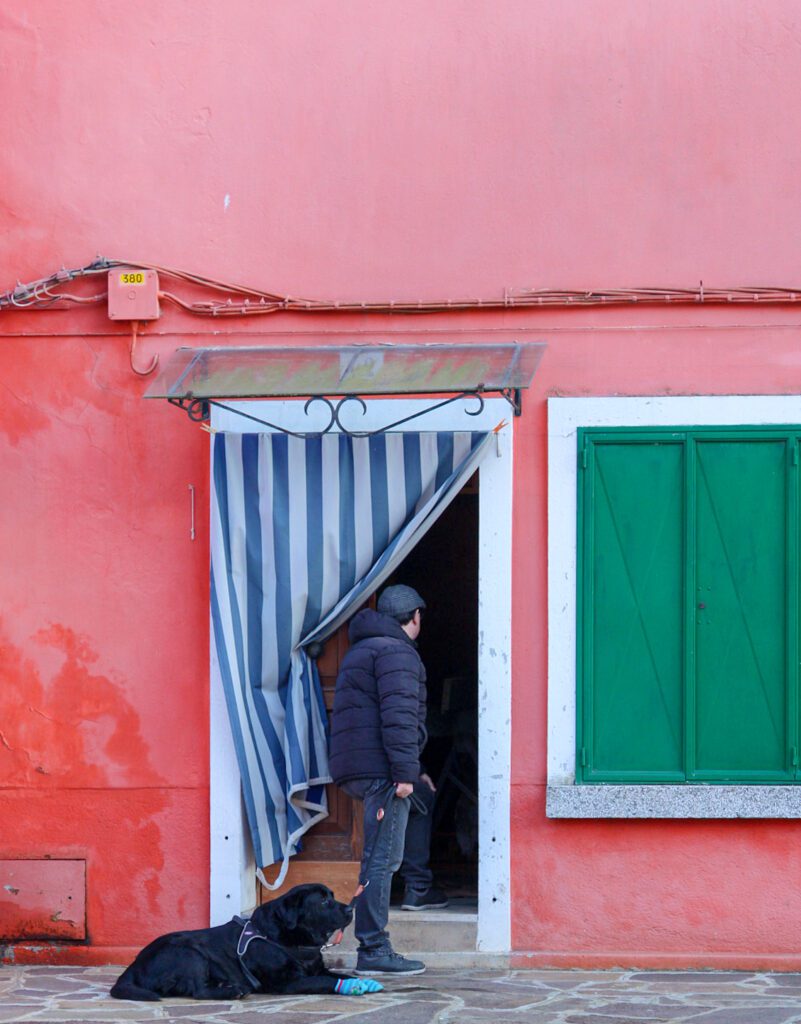
The Real Story Behind Burano’s Colorful Houses
One of the things I loved most about Silvia’s tour was learning that Burano’s colors aren’t random. Each façade marks where one property ends and another begins. Anyone can repaint their home, but only after requesting permission from the local government.
This has created a friendly rivalry between neighbors. The brighter, the better. And Burano’s colors are now so integral to its identity that they’re protected.
Considering buying property here? Prices may look appealing, but renovations are where costs climb. Homes are small and vertical, built up instead of out. Somehow Silvia owns several—and rents them out—because this island truly is her life.
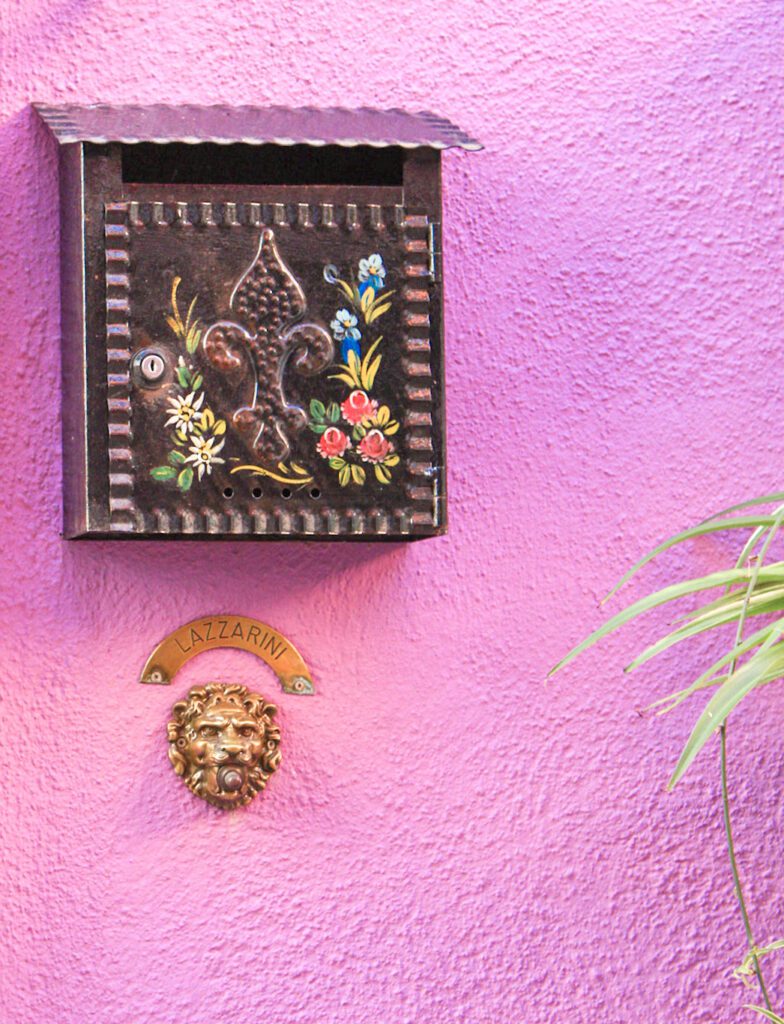
When to Visit Burano (Honest Advice for First-Time Travelers)
Burano is beautiful year-round, but the experience changes dramatically depending on the season and the day of the week. Here’s what you actually need to know before you go.
Best Time for Fewer Crowds and Better Photos:
Late October–April
This is when you get Burano at its quietest. Cooler air, softer light, fewer tour groups, and far more space to wander without bumping elbows.
Best Time for Color + Mild Weather:
May, early June, mid-September
Shoulder season hits a sweet spot — pleasant temperatures and lively canals without summer-level chaos.
Busiest Time (Still Worth It With a Tour):
June–August
Expect peak tourism and midday crowds, especially between 10:30 AM and 3 PM. If you’re visiting in summer, go early morning, late afternoon, or join a local guide who knows which streets to avoid.
Days to Avoid:
Weekends, no matter the season.
Saturdays in particular draw day trippers from the mainland.
My Experience:
I went on a Tuesday afternoon in winter and felt like I had whole streets to myself — the kind of quiet you rarely get in the lagoon.
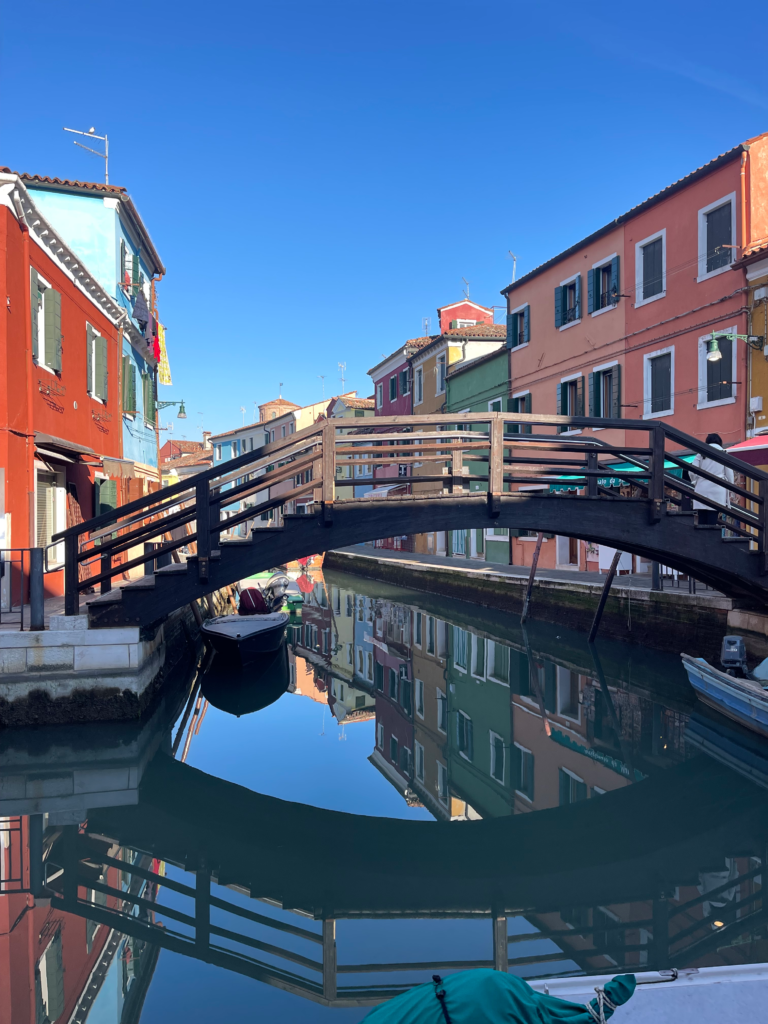
How to Get to Burano from Venice (What Travelers Actually Need to Know)
Quick Guide: Vaporetto to Burano
Departure Point: Fondamente Nove (Venice)
Boat Line: Vaporetto Line 12
Travel Time: ~45 minutes
Ticket Price: €9.50 one way
Best Times to Travel: Before 10 AM or after 3 PM
Apps You’ll Need:
• AVM Venezia – real-time schedules and platform updates
• CheBateo? – quick vaporetto route references
Did You Know: Paying for the Vaperetto is easy if you have a tap-and-go debit card!
Helpful Apps for Your Burano Trip
Google Maps
Great for general navigation in Venice, but keep this in mind: Google Maps can struggle with GPS accuracy in the lagoon and inside Venice’s narrow alleyways. The signal often bounces off the buildings, so your blue dot may “drift” or show you a few streets away from where you actually are. It’s still helpful for big-picture directions, but don’t rely on it for precise turns near Fondamente Nove or inside the tight canals of Burano.
CheBateo?
This is one of the easiest tools for checking Vaporetto lines and confirming which boat goes where. It’s incredibly simple, visual, and helpful if you want quick confirmation before boarding Line 12.
AVM Venezia Official App
This is the app locals use. It gives real-time Vaporetto schedules, delays, pier changes, and platform updates. If you’re catching Line 12 during busy hours or changing boats on the way back from Burano, this is the most reliable resource.
Want to skip the stress of buying separate Vaporetto tickets?
This pass covers every public boat you’ll need for Burano, Murano, Torcello, and even getting around Venice itself. It’s the easiest and most affordable way to move around the lagoon—especially for first-timers or anyone visiting multiple islands.
See Venice Waterbus Pass options here
Don’t Just Visit Burano—Experience It Through Someone Who Lives There
Burano is beautiful no matter how you explore it. But walking with a local guide who knows the families, the traditions, and the histories behind every corner turns the island from a postcard into a personal encounter.
If you’re building a Venice itinerary and want one day that feels unhurried, meaningful, and photogenic, make it this one.
